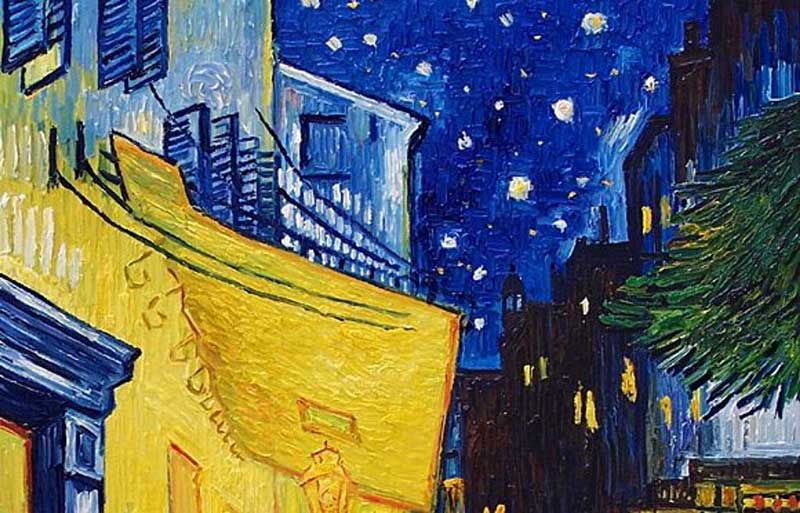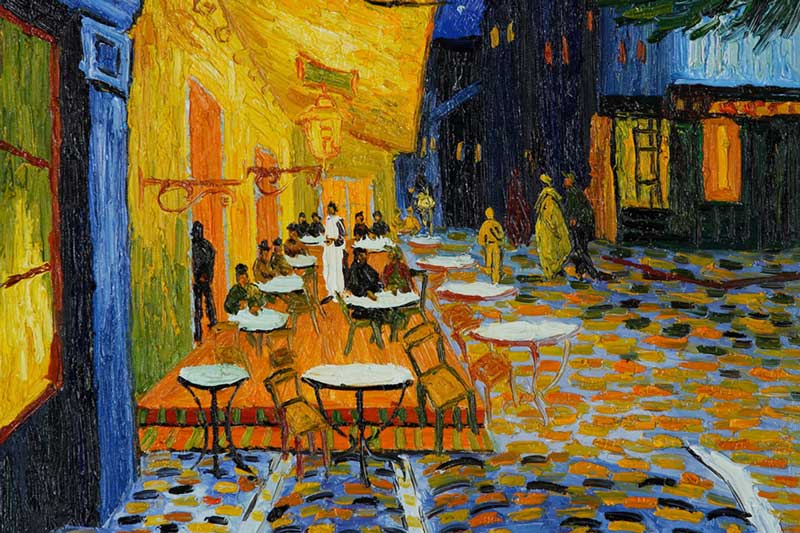
When first exhibited in 1891, Café Terrace at Night, painted by the Dutch artist Vincent van Gogh in Arles, a city and commune in the south of France, in mid-September 1888, was titled Coffeehouse, in the evening. Also known as The Café Terrace on the Place du Forum, the painting was not signed by the artist, but it was described and mentioned by him in three letters.
Although it was painted on the street at night, the artist recreated the scene from his observation, like the Impressionists. But unlike the Impressionists, he did not paint as his eyes observed, he tinged the image of the reality with a spiritual and psychological tone that reflected his personal reaction.
After spending two years in Paris, Vincent van Gogh settled in Arles in 1888, as he was inspired by the vibrant lifestyle of the city during his earlier trip. While in the city, he frequented a local coffee shop on Place du Forum and decided to paint it to express his troubled existence, intending to bring to life a night painting that uses nothing but beautiful blue, violet, and green.

Café Terrace at Night, an 1888 oil painting by Vincent van Gogh, depicts the terrace of the Place du Forum at night with several people are seated at the tables in the background, while the foreground displays empty tables and chairs and the entrance to the coffee joint. The ambience reveals a nocturnal setting with the starlit sky and the tables are lit by overhanging lanterns. While the windows on the first floor of the café are open, the right side of the canvas depicts several buildings as well as branches of a tree.
Although it is a night scene, black is not used for the night sky, not even for the shadowed buildings. However, black is used to create the cobblestones and some of the figures to reduce them to minor details of the painting.

The most prominent focus of the painting is the sharp contrast between the warm and inviting yellow light of the overhead lantern against the rich and dark blue of the night sky, illuminated with countless stars, reinforced by the dark blue of the buildings in the background, and the orange floor of the café and adjoining windows and doors. The darkness of the blue and green on the buildings in the background only seem to highlight the yellow light of the lantern that lures the people to the café for sipping a drink and relax in the summer evening. In the silhouette orange floor of the café and adjoining windows and doors, one can discover the inverted shape of the blue sky, decorated with the scattered disks of the stars, matched in the elliptical tabletops below.

Interestingly, it was suggested by Jared Baxter in 2013 that the Café Terrace at Night contains the illusion to the famous Last Supper by Leonardo da Vinci. Like the Last Supper, the main characters in Vincent’s painting include one central figure with long hair surrounded by twelve figures, along with the cross-like shape behind the central figure. There is also a shadowy figure slipping through the doorway, which may represent Judas.
While the Café Terrace at Night is housed in the Kroller-Muller Museum in Otterlo, Netherlands, home to the second largest collection of Vincent van Gogh, the original Café Terrace still exists at the Place du Forum in Arles, under the name Café Van Gogh.
